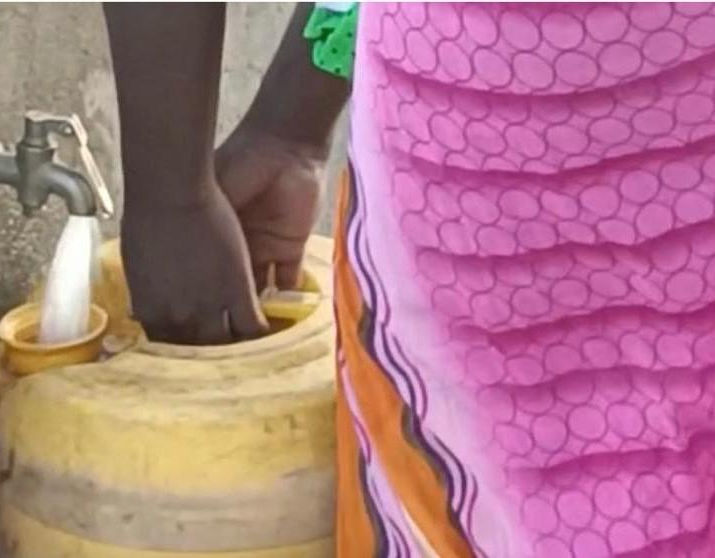Contact
info@mysite.com
123-456-7890
Location
500 Terry Francois Street, San Francisco, CA 94158
Join us in making a difference. Contact us to learn more about our work and how you can help.
© 2025 Ewaso Enclave
Location
500 Terry Francois Street, San Francisco, CA 94158
Ewaso Enclave Conservancy sits in a gateway protecting Elephant Migration Corridors

Wildlife Conservation and Rangeland Management programme
Dedicated to the constant search for innovative Conservation ideas, advocating principles based on scientific data and hands-on experiences and stress-related impacts on Ecosystems and Wildlife




Programme Objectives
The programme focuses on three main objectives:
Wildlife habitat management
To enhance species performance.
Reduction of human impact
On habitats through sustainable practices.
Wildlife population monitoring
Minimize competition and manage predator activity.
Key Initiatives

Habitat Management Programme
Grass biomass, woodland areas, and water resources are critical to sustaining the conservancy’s ecological health. Efforts include:
-
Rehabilitation of degraded areas with palatable grass and indigenous woody vegetation.
-
Periodic monitoring of biomass and browser/grazer density to maintain ecological balance.
-
Soil conservation measures such as planting grass on eroded areas and stabilizing river embankments.

Wildlife Management Programme
To support population growth and minimize human-wildlife conflict, actions include:
-
Routine monitoring of wildlife populations by ecologists.
-
Fitting large predators with collars to track their movement and prevent straying into communities.
-
Ensuring connectivity with surrounding conservancies through open spaces.
-
Disease screening in collaboration with local veterinary offices.

Water Resource Management
Water security is fundamental for habitat sustainability. With three earth dams holding 160 cubic litres, the focus is on maintaining current sources and expanding capacity when necessary. Key activities include:
-
Monitoring water use across wildlife, research, and operational facilities.
-
Exploring options like rainwater harvesting, sand dams and additional boreholes.

Climatic and Habitat Variables
Rainfall patterns and fire risks are critical ecological variables. Actions include:
-
Installation of automatic weather stations for rainfall monitoring.
-
Fire management strategies like cutting fire breaks, acquiring firefighting equipment, and training personnel.
-
Eradicating invasive species and enhancing wildlife distribution evenly across the Conservancy.

Empowering Wildlife Conservation Across Laikipia
Why Engage the Community?
The surrounding communities are a critical asset to the success of the conservancy. By enlisting their support through meaningful collaboration, the EEC aims to:
-
Build partnerships for conservation.
-
Empower communities through employment, education, and joint projects.
-
Enhance the socio-economic well-being of local populations.
-
Create a sustainable, community-supported conservation framework.

Guiding Principles
Collaboration to enhance wildlife conservation.
Socio-economic benefits for local communities.
Management Objectives and Actions

Enhance Conservation Education and Awareness
-
Community Outreach in Schools: Establish conservation education programs in schools adjacent to EEC to build knowledge and foster sustainable environmental practices.
-
Conservation Awareness Campaigns: Use print and digital media to increase environmental awareness in nearby communities.
-
Public Support for Conservation: Engage local populations through interactive workshops and educational events.
-
Strengthen Ecological Protection": Engage communities in protecting wildlife migration corridors, wildlife habitats and dispersal areas to support ecological health.
Enhance Community Opportunities, Employment and Benefit Sharing
-
Employment Opportunities: Prioritize local hiring for both skilled and unskilled jobs in the Conservancy.
-
Nature-Based Livelihood Projects: Support ventures like bee farming and fish farming to provide sustainable income sources.
-
Support for Education: Invest in infrastructure and resources for nearby schools to improve access to quality education.
Social and Cultural Projects
-
Wildlife Corridors and Habitat Protection: Engage communities in protecting migration corridors and dispersal areas to support ecological health.

How the Community Benefits
Education Support: Better school facilities and access to conservation education.
Sustainable Livelihoods: Income-generating projects tied to conservation goals.
Cultural Tourism: Revenue from showcasing local heritage and traditions.
Collaborative Solutions: Joint initiatives to address human-wildlife conflict and enhance security.
Our Timeline
2017
Text
2019
Text
2020
Text
2021
Text
2021
Text
2022
Text
2023
Text
2023
Text







